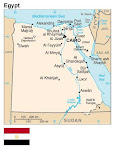 Johannesburg - South Africa's power crisis was expected to keep South Africa in second place among the world's largest gold producers now that China has claimed first prize.
Johannesburg - South Africa's power crisis was expected to keep South Africa in second place among the world's largest gold producers now that China has claimed first prize.Precious metals consultancy GFMS on Wednesday said it expected China to consolidate its lead after overtaking South Africa as the world's largest gold producer in 2007.GFMS executive chairperson Philip Klapwijk said this was "primarily as a result of further declines expected in South Africa due to its ongoing power supply issues".Launching its annual review of the gold market, Gold Survey 2008,GFMS said research conducted by the consultancy showed that global mine production in 2007 declined by 0.4% year-on-year with all regions except for Asia recording declines, but Africa registering the greatest drop of 29 tonnes.It said South Africa's decline in production was primarily due to the lower grades of mined ore."Temporary mine closures, enforced while heightened safety controls were implemented, further hampered production towards the end of the year," GFMS said."Elsewhere in the region, poor weather, labour disputes and processing difficulties served to dampen results," the consultancy said.According to GFMS research North American production fell for the seventh consecutive year, while Latin America also registered a near-23 tonne decline despite strong gains in Brazil, Mexico and Guatemala.
Significant cost hikes
Production in the Commonwealth of Independent States declined modestly, driven primarily by a fall in Russian output, while Australia broadly maintained 2006 levels."Strong growth was seen in Asia from China, Indonesia, Papua New Guinea and the Philippines. Of note was the fact that China posted a 33-tonne rise to become the top global performer, overtaking South Africa's century-long position as the world's leading gold producer," GFMS said.Regarding total cash costs increased by "a steep 25%" from 2006 levels with these rises the greatest in Australia, where total cash costs for the year increased by $91/oz last year.However, despite the significant cost hikes, average global cash margins actually expanded to $300/oz, due to the escalating gold price.The survey highlighted that cost inflation was exacerbated by the willingness of producers to undertake development work and waste-stripping activities at a time when healthy margins would be maintained.Consequently, temporary lulls in production were seen at many operations worldwide, said the consultancy.GFMS forecasts that global mine production in 2008 will remain broadly in line with the level recorded in 2007.
As in the days of Noah....






















































































.bmp)

























.bmp)